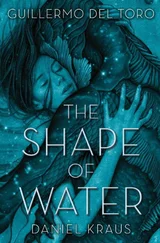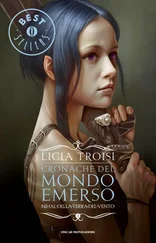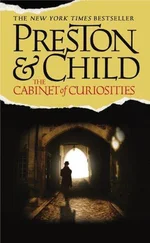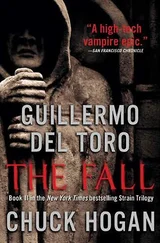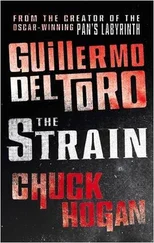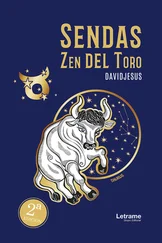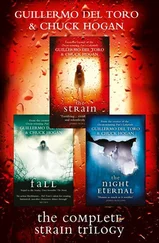GDT: Christina’s World can never be confused with a mere illustration. What I always say is that illustration is a piece of art that doesn’t tell you a story. It needs the text to complete it. It’s incomplete art. Christina’s World , though, is a world unto itself.
I try to do the same in film. I always say that 50 percent of storytelling is “eye protein,” which is very different than eye candy. They look the same to the untrained eye, but they are fundamentally different. A master of eye protein, especially in his early films, is Ridley Scott. Half of why Blade Runner is important is not in the screenplay or the story.
MSZ:A moment ago you were talking about how the artists you tend to gravitate toward have somewhat muted palettes. But Blade Runner and your films have very bright palettes. Yours in particular are supersaturated, making them almost like comic books.
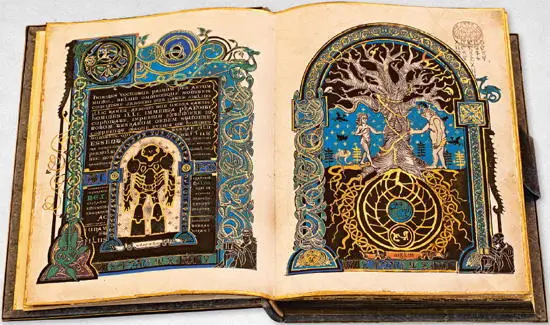
The illuminated book from Hellboy II .
GDT:It’s true. The films I’m the proudest of are the Hellboys, Pan’s, Devil’s Backbone , and Pacific Rim. I think they are absolutely beautiful to look at. I try to work with very contrasted palettes in the movies and in the design of the monsters, and sometimes it works really well.
I base a lot of my color composition on a primary clash between blue or cyan and gold or amber. This over a thick layer of blacks and then the rest of the colors come in an absolutely punctilious, obsessive manner. I am particularly careful with red. I use it only in calculated ways. Even on Hellboy.
But if you look at Devil’s Backbone , the film is saturated, but it is divided into almost monochromatic episodes. And Cronos is very controlled. Pan’s Labyrinth , too, has a really controlled palette, although it is saturated.
I’m attracted to and influenced by some things that I don’t do. For example, I was always fascinated by a translucency of the skin. Many, many artists, going back to the Middle Ages, depict a translucency of the skin. There is a fascination with pale skin in European art that, for me, is really attractive. And there’s a moment where it becomes almost iridescent. There’s a hue of green, an almost fishlike quality in certain paintings that has had a huge influence on me. But I don’t know if that’s come through in the movies. I’ve tried.
MSZ:We’ve just covered quite a lot of Western art history. Your parents had art books in your home when you were a kid, and you were able to look at the entire history of art, right? It’s very interesting. You were really studying a lot of different styles and soaking up a lot of different influences at the same time.
GDT:Yeah. And at the same time, I was reading comic books by Bernie Wrightson, Jack Kirby, and John Romita Sr.
MSZ:In contrast with some of the fine artists you gravitated toward, those guys were dealing with extremely vivid colors, extremely vivid expressions. With respect to Bernie Wrightson, was it Swamp Thing?
GDT:Yeah, I never bought many superhero comics. I used to buy House of Secrets, House of Mystery.
So I have a very strange mix of art, movies, books, and magazines. I don’t like compartmentalizing. The mind is flexible. If you are rigid and you say, “I am a scientist,” or, even worse, “I am a nuclear scientist, and that’s my only area of interest,” it’s a tragedy. Or “I’m a serious literate. I’m a serious writer. I’m a serious filmmaker. I do only drama.” Obviously, you can find an amazing range in drama, but by not being rigid you really discover things and end up enjoying yourself.
As an artist, I think that you have to be as free as a kid: In the morning you can be an astronaut; in the afternoon an Indian or a cowboy; and at nightfall an Antarctic explorer. And you play, enjoy, and grow. Inevitably as you play, you grow.
MSZ:Let’s talk, then, about how you started drawing—how you started synthesizing all these influences and finding a voice that was your own.
GDT:Well, I started drawing very young because I was illustrating my horror stories. But the three creatures I drew obsessively were the Gill-Man from Creature from the Black Lagoon , the Frankenstein monster, and Lon Chaney’s Phantom of the Opera. But obsessively—when I was eating ice cream, or on a bicycle….
I remember there was a panel by Jack Kirby, from the period when he was doing Etrigan the Demon for DC. It was a story about Farley Fairfax, who was an actor who got his face taken by a demon, and Kirby quoted from Phantom of the Opera. The original art, which I always wanted to buy, is in the hands of Mike Mignola, and he constantly tortures me with that fact. But that panel of Farley Fairfax—his mouth open, his eyes, and the tongue—and he’s saying, either in that panel or shortly thereafter, he says, “He took my face! He took my face!” Oh, I drew that panel like a Lichtenstein. I mean, I drew it small, I drew it big.
MSZ:How old were you when you started drawing?
GDT:As far back as I can remember.
MSZ:And was it always in color?
GDT:No, no. I did all the doodles, and all the little balls and sticks and all that stuff, in black and white. But color was very important because I’m very attracted to color, instinctively.
MSZ:So when you first started working with color, was it with crayons or markers?
GDT:I’ve always hated crayons because I hate the texture. What I did with crayons was eat them, like every kid. I loved the taste of crayons when I was a kid. But I always drew with colored pencils. I find them very soft. Now, if I had the time, I would do alcohol markers all the time because that’s such a gentle medium.
MSZ:And where did you get your color sense from? It’s very strong.
GDT:I think it’s expressive. The colors of youth are gold, blue, and white. Those are the colors of hope and untainted promise. Then, to me, cyan is always a very subterranean color. And death is black, revenge is red, and tarnished gold or blue for memories. But it varies from picture to picture. They all dictate their own palette.
I taught myself to mix colors because I started painting models when I was a very young kid. So I was assembling models, all these monsters.
Part of me dreams of what would have been if I had become an illustrator. There is a saying, “Those who can’t draw, render.” And I can’t draw. I really am a self-taught guy, so my drawings are very deficient, and the way you mask a deficiency in a drawing is by overrendering, so what you see in the notebooks are not very good drawings.
MSZ:You’re really skilled, though. Did you ever take classes as a kid?
GDT:Well, the ones at school. But I was always drawing the wrong things, so I never got good grades on that, because they always found the subjects objectionable. For example, they would say, “Choose a moment in the life of this president and make it in clay.” And I would do the president when he was shot in the head, with blood on the table.
When some people saw my drawings and my paintings, they told my mother, “You’ve got to take this kid to a psychologist.” And she took me to a psychologist, and the guy gave me some clay and he said, “Do whatever you want.” And I did a skeleton. And then I asked the psychologist, “What does ‘bastard’ mean?” That didn’t help my case.
Читать дальше


